
- Home
- Features
- 12-hour Dial (7)
- 1st Edition (75)
- Boxed (5)
- Collector's Edition (36)
- Coloured Vinyl (8)
- Date Indicator (5)
- Discontinued (18)
- Dust Jacket (9)
- Easy To Read (8)
- Framed (7)
- Illustrated (6)
- Limited Edition (310)
- Manual Included (6)
- Numbered (5)
- Sealed (10)
- Signed (28)
- Special Edition (16)
- Steelbook Edition (5)
- Variant Cover (22)
- Wi Fi (4)
- Other (2631)
- Finish
- Pattern
- Shape
- Style
- Unit Type
Pepon Osorio Escalio 1984 Signed Limited Edition 2/200 VERY RARE
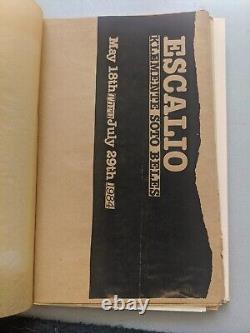
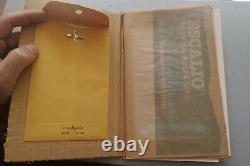
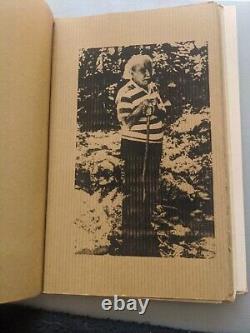
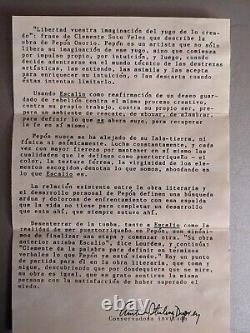
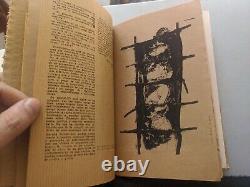
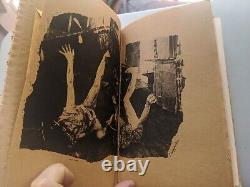

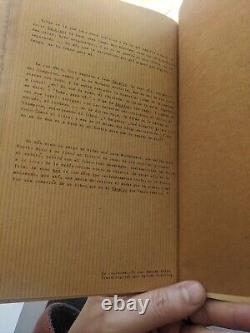
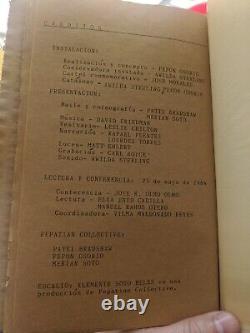
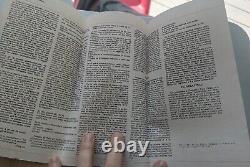
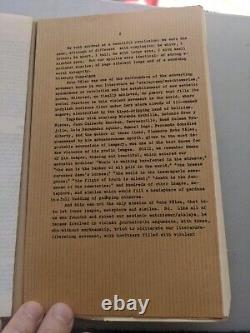
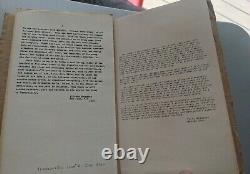
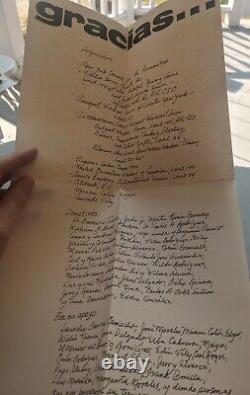
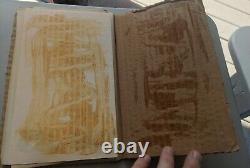
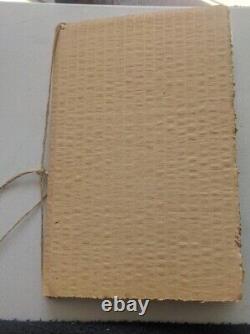
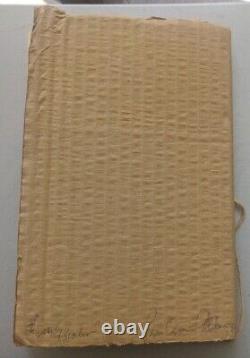
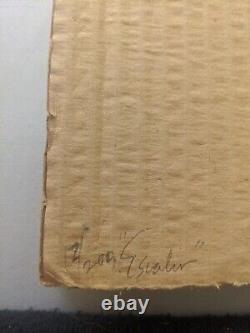
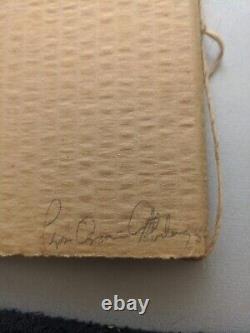


Pepon Osorio "Escalio" 1984 Signed Limited Edition 2/200 VERY RARE. This is one of only 200 (numbered 2/200, signed and dated by Pepon Osorio) booklets about the 1984 Installation by Osorio and Performance by Marian Soto and Patti Bradshaw at El Museo del Barrio in NYC.
This booklet is really a work of art. It's created with a folded cardboard cover and has the Spanish language pages bound with simple twine. There's a fold-out Thank You Gracias... Page recognizing important contributors/donations that was glued to the inside of the back cover. It has become unglued (clearly not professional grade stuff) but is otherwise flawless. There are additional pages loosely inserted that are English translations of the major written pieces in the Spanish section. It seems likely that these might have been handed out at a special VIP showing or something.The back cover is signed in pencil. On the left is written: 2/200 "Escalio" and on the right it's signed by Pepon Oscorio and dated'84. In 1984, a year before their first collaboration.
Osorio, Soto, and choreographer and dancer Patti Bradshaw presented. At El Museo del Barrio. An installation by Osorio, accompanied by a performance by Soto and Bradshaw, signaled the start of a collaborative practice. Makes a direct reference to the title of a 1937 essay by Puerto Rican poet and activist Clemente Soto Vélez, which was a philosophical treatise on the revolutionary aspects of nature. Due to his activities as a member of the Puerto Rican Nationalist Party, the poet was arrested alongside other pro-independence figures and sentenced for conspiring to overthrow the U. S government on the island. Translates to either tillable land or fallow land, in other words land prepared for cultivation or land plowed and left uncultivated. Osorio's installation, or "sculptural paintings" as he called them at the time, relate to Velez's assertions in.His text that the mind is tillable. Osorio placed his sculptural paintings made of cloth, wood, rope, and liana on the gallery floor at El Museo, which he also covered in soil.
The central structure was a flattened triangular shape, which Osorio constructed two long pieces of wood and cloth; it resembled a rudimentary home. Situated next to the triangular sculptural painting was a cube-shaped structure, which was built out of a wooden frame and sheer fabric, along with another wooden structure that resembled a ladder. Overall, the gallery space took on the appearance of a simple living site. Staged among the sculptural paintings and soil, Soto and Bradshaw's performance premiered at El Museo del Barrio on May 18, 1984. Also constituted the first event staged by the collective Pepatián, named for the coming together of Osorio, Bradshaw, and Soto, which heretofore became the vehicle for Osorio and Soto's collaborative projects. To the sounds of a sparse musical arrangement of string instruments and chimes, Soto and Bradshaw move around the space carrying large boxes on their heads. At first, they move slowly and methodically, oscillating between standing and sitting on the ground, but as the performance continues their movements become quicker and fluid. Filling their respective boxes with soil, allude to actions related to labor tied to land. As the performance progresses Soto and Bradshaw become more soiled and at one point remove their outer clothing, wearing only their undergarments for the rest of performance. The performance ends with the sound of beating drums as Soto and Bradshaw, covered in dirt, dance with free movements around the triangle sculptural painting. Was presented again at the Joseph Papp's Festival Latino at the Public Theater in Lower Manhattan.Critic Jennifer Dunning's review for the. Describes the scene much like the earlier presentation at El Museo, but notes the theater seats were adorned with small paper bags filled with dirt and slips of paper with quotations from Vélez. The quotations, as she describes them, urged "imagination be freed from the yoke of the created, " and comprehension being the supreme law, those who put it into action have liberated themselves. These quotes, using abstract language, communicated ideas about Nature as revolutionary that were conveyed in the performance. As the performers had at El Museo, Soto and Bradshaw moved about the stage carrying boxes on their heads.
Dunning describes them filling these with soil in this version: filling and emptying buckets with water, and white and orange fluids, and rolling and falling through the dirt. " During the hour-long performance, as at El Museo, Soto and Bradshaw walked with the boxes balanced on their heads; Dunning remarked that the occasional way they fell on the stage "reminded the audience of planting and burial. As Soto and Bradshaw covered themselves in soil, these repetitive actions became increasingly frenzied.The stage became land for tilling as they performed the. Repetitive actions that abstracted labor. Thus, "planting" and "burial" become conflated in the imagery of the performance.
Osorio, Soto, and Bradshaw's approach to using abstraction to represent culturally specific material established an important framework for their collaborative works to come. Osorio and Soto embraced the terminology (and imagery) of. To describe their shared artistic practice.
The hallmarks of this approach emerged in the mining of cultural references and the literal insertion of this project into the exhibition space, and this notion would be explored more deeply in. (1985), which evokes a 1960s grassroots movement in Puerto Rican history. City University of New York (CUNY). Theses and Dissertations Hunter College. Pepón Osorio and Merián Soto: Multidisciplinary Collaborations, from 1985 to 1995.

